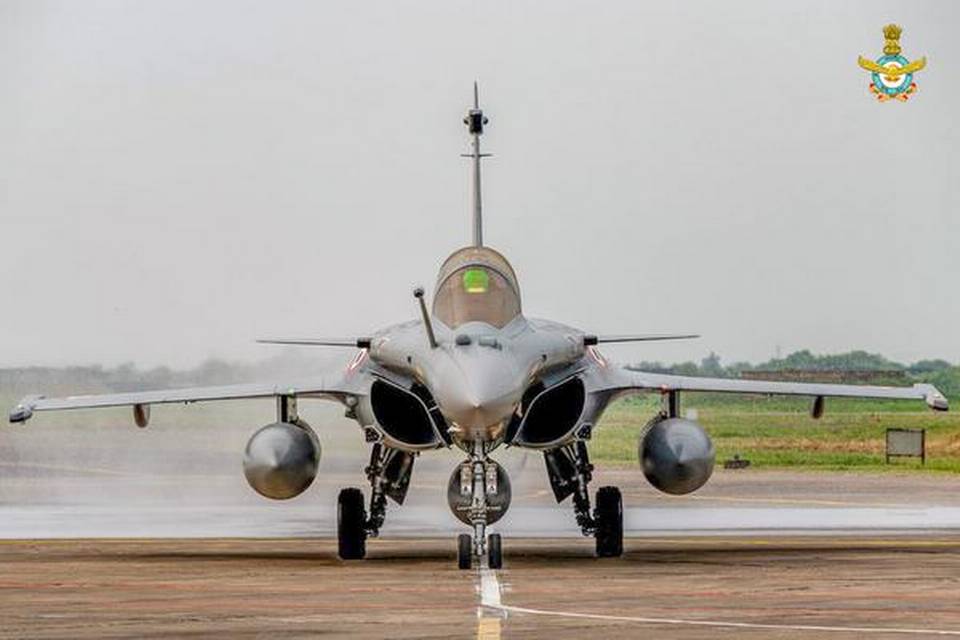
SOURCE: THE HINDU
The Indian Air Force (IAF) has much to cheer with the arrival of five Rafale omni-role fighter jets in terms of the technology and capability accretion that it brings. In the words of the Air Chief Marshal (ACM) R.K.S. Bhadauria and former ACM B.S. Dhanoa, Rafale is a “game changer”.
Encapsulating what the Rafales bring in, ACM Bhadauria said in February that at the time of the Kargil conflict in 1999, India had an edge over Pakistan in terms of Beyond Visual Range (BVR) missile capability. “We allowed that to slip and thereafter it took a decade-and-a-half of struggle in the acquisition process to be able to get better capability,” he said. The Rafale, armed with the Meteor BVR air-to-air missile, will restore that edge in the neighbourhood as there is no equivalent to it currently.
According to its manufacturer Dassault Aviation, Rafale is an omni-role fighter capable of the entire spectrum of roles — air superiority and air defence, close air support, in-depth strikes, reconnaissance, anti-ship strikes and nuclear deterrence. With its advanced AESA (Active Electronically Scanned Array) radar, electronic warfare suite and network-centric capabilities in addition to its armaments, Rafale is now the most advanced fighter in the IAF arsenal, overtaking the SU-30MKI, which is due for major upgrades.
Rafale is also the first imported fighter to join service in over two decades since the SU-30s in the late 1990s. Rafale has 14 hard points for weapons and can carry a total external load of over 9 tonnes. In addition to the Meteor, it is armed with SCALP long-range stand-off attack air-to-ground missiles and MICA multi-mission air-to-air missiles. The latest addition, HAMMER (Highly Agile Modular Munition Extended Range) medium range air-to-ground missiles, is being procured through the emergency route.
Another significant factor with the Rafales is that as per contract, at least 75% of the Rafale fleet has to be operationally available, which would make it the most available fighter in the IAF fleet. The first Rafale squadron, No. 17 Golden Arrows, will be based at Ambala and the second squadron will be at Hasimara. All 36 aircraft will be delivered on schedule by end 2021, the Indian Embassy in France said last week.
The €7.87 billion (?59,262 crore) inter-governmental agreement, signed in September 2016 between India and France for 36 Rafale jets in fly away condition, also includes 13 India-Specific Enhancements (ISE), the non-recurring design and development cost of which is ?9,855 crore. Some of them pertain to radar enhancements, helmet mounted display, ability to start and operate from high altitude airfields, advanced infrared search and track sensor and a very potent electronic jammer pod.
The deal also epitomises the cumbersome defence procurement process in which government-to-government deals have of late become the way out. Rafale was originally selected under the Medium Multi-Role Combat Aircraft tender issued in 2007, which itself was conceived as a Mig-21 replacement project in early 2000s. Rafale was selected in 2012 but negotiations got stuck due to differences and the tender was eventually withdrawn after the emergency purchase announced by Prime Minister Narendra Modi in April 2015, citing “critical operational necessity” of the IAF.
Falling numbers
However, the 36 Rafales will do little to arrest the falling numbers of fighter squadrons of the IAF, which has a sanctioned strength of 42 squadrons but is down to 31 at present. To offset that, the IAF is banking on the indigenous Tejas Light Combat Aircraft (LCA). A contract for 83 LCA-Mk1A is in final stages and they are in addition to the 40 jets already contracted for. A more advanced LCA-Mk2 is also in the works. The government has recently approved the procurement of 21 MIG-29 jets from Russia, which will add two additional squadrons. In addition, 12 SU-30MKI aircraft have also been approved, which will replenish the numbers of Sukhois lost in crashes. The IAF will also phase out five squadrons of Mig-21s in the the next few years.
While the IAF works to keep the numbers from falling further, the Rafale, which joins the IAF at a time of unprecedented tensions on the border with China, will give a qualitative edge to the force in the region.






